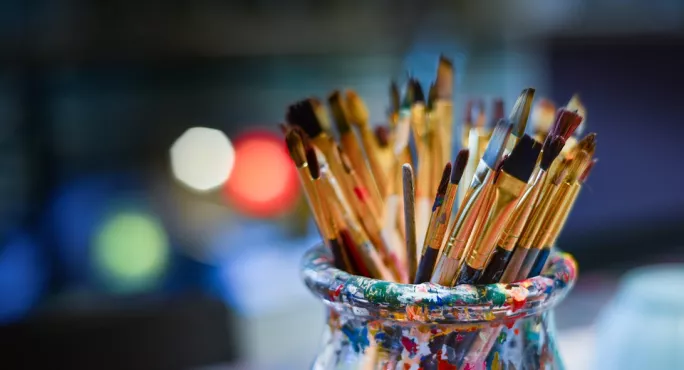One of the loveliest things about being a primary teacher is that you get to teach a bit of almost everything. But let’s be honest: sometimes it can also be a right headache when you have to plan for a subject that you have less-than-great subject knowledge in or, even worse, that you just don’t feel that “good” at.
Enter: art.
When it comes to art, it’s not uncommon to hear teachers admit “I’m just not very creative”, or “I’m no good at drawing.”
The thing is, though, that while being able to draw can be a bonus, this is not where effective art teaching and learning begins and ends. I know from my own experience that it’s possible to teach art effectively even if you’re not Van Gogh. Here are my tips.
Pick a focus
Pick an area of focus and aim to explore this in depth. At my school, we have half-termly topics that centre around different areas of the curriculum. During the art and design themed half term, different topics across different year groups include: sculpture, printing, portraits, pop art and particular paintings - a bit like the National Gallery’s Take One Picture scheme.
Think about contrast
Keep the idea of contrast in mind to help you design broad and rich learning within your focus area - whether that means looking at contrasting techniques, artists with contrasting styles or contrasting themes within a painting.
Through their sculpture topic for example, our Year 1s learn about contrast in a couple of different ways. The two main sculptors that they look at are Andrew Goldsworthy, who uses natural materials such as rocks and branches to build sculptures in situ; and Antony Gormley, who typically uses a lot of metal.
They also learned about the two main types of sculpture: construction (making a sculpture by adding different pieces of materials together) and carving (making a sculpture by taking away from a piece of material).
Similarly, Years 3 and 4 focus on two different portrait artists with different styles and Years 5 and 6‘s learning centres around two paintings by Seurat, Bathers at Asnières and La Grande Jatte, which show contrasting views of the same scene in France.
Provide scaffolding
Just as you would when it comes to writing in literacy, it’s important to provide pupils with scaffolding in art. This can be done in different ways, depending on the context, but general ideas that I’ve seen and used effectively are slicing up a painting and teaching children to reproduce just one area using a given technique or really capture something in detail. Depending on the style of the artwork, limiting the colour palette can be helpful too.
Use sketch books
Having a sketch book is so important for drafting and teaching children basic concepts, such as basic body and face proportions. If you’re teaching a particular technique, it’s also vital to allow time for pupils to practise and develop it in “rough”.
Again, in literacy, children more often than not have the opportunity to build up to a final piece of work and art needs to be approached in much the same way.
Demonstrating a particular technique in art is never going to be ideal if you’re not feeling confident in it yourself, but remember that there will be children in your class who don’t feel confident either. Modelling the value of “having a go” whether you feel confident or not can sometimes make all the difference to them.
Claire Lotriet is assistant headteacher at Henwick Primary School in London. She tweets at @OhLottie





